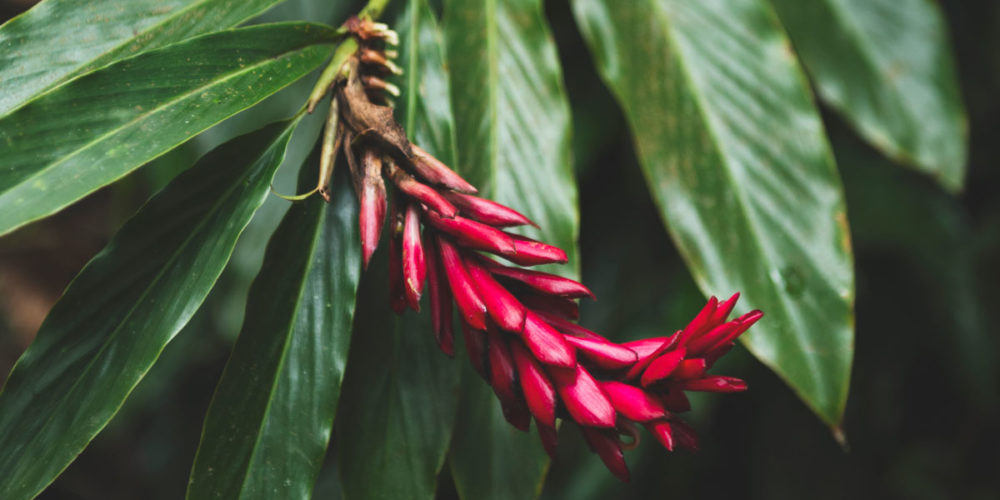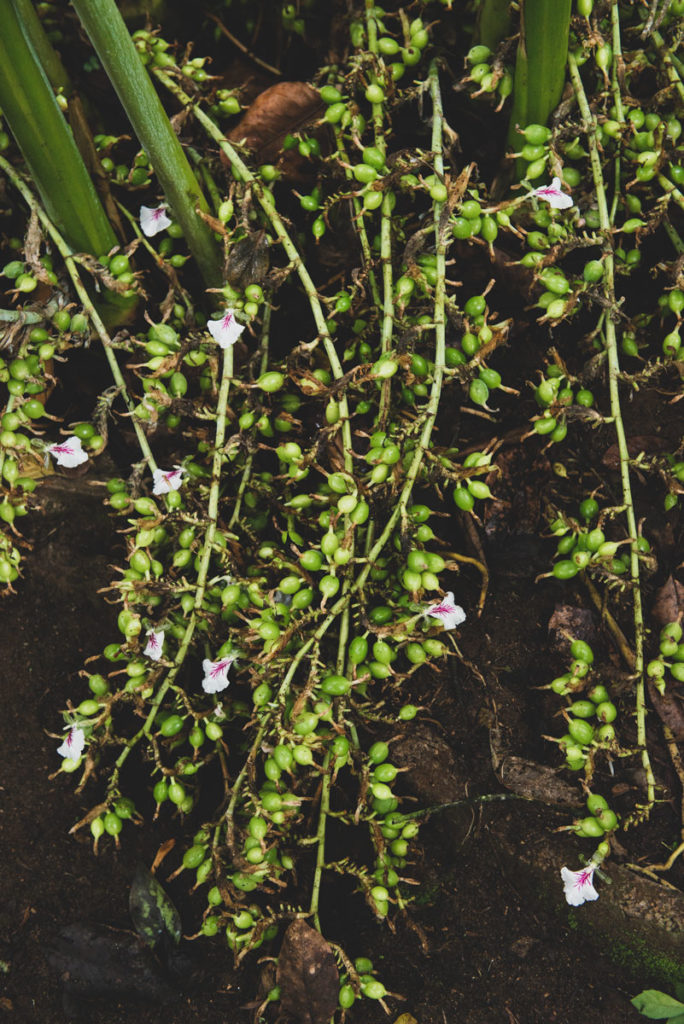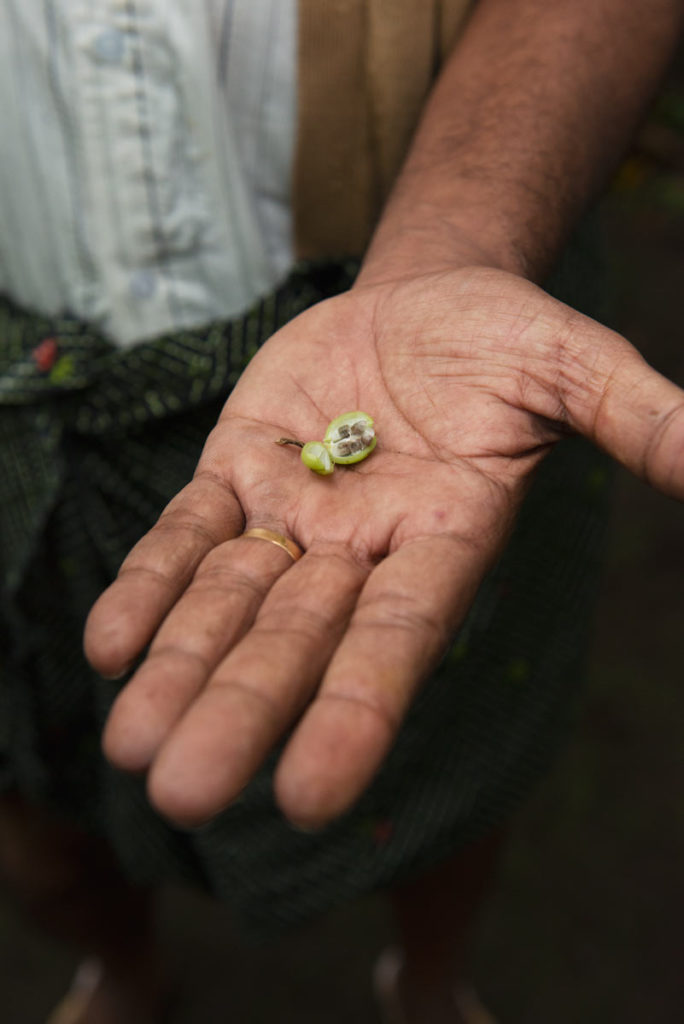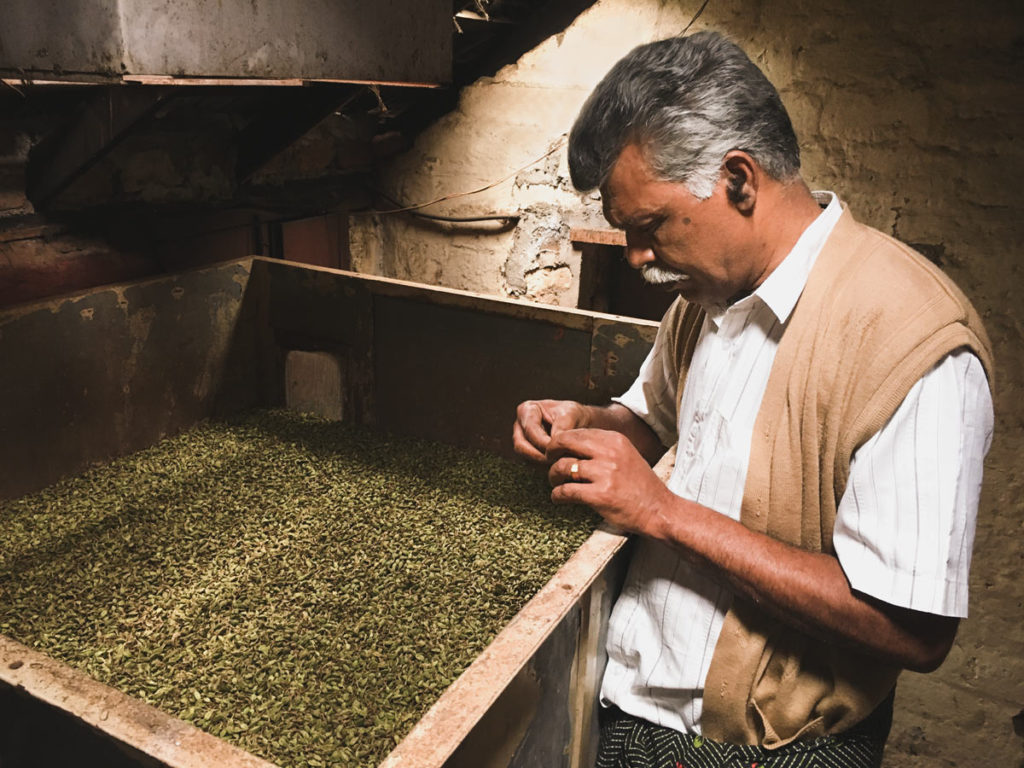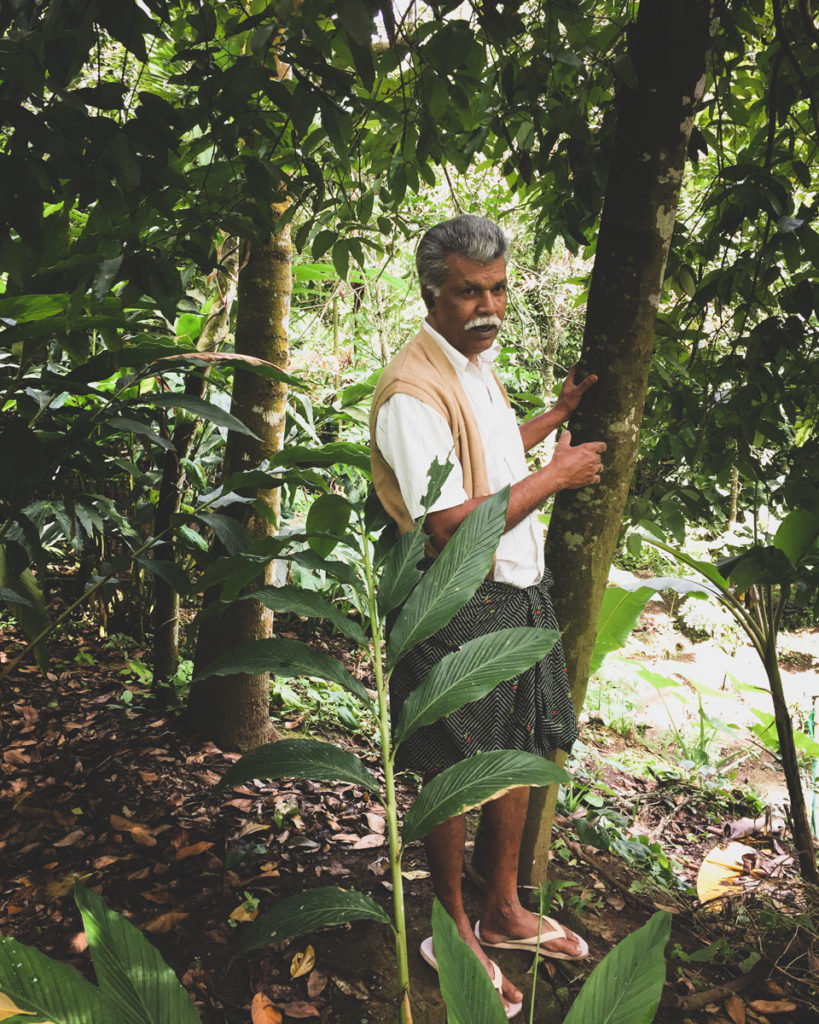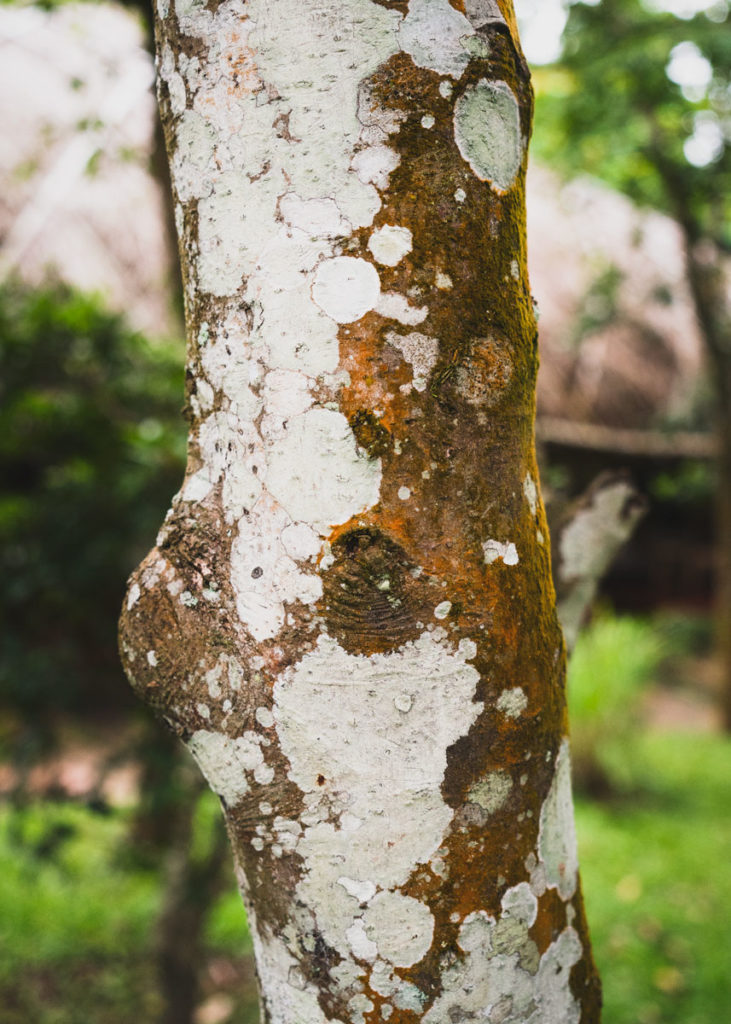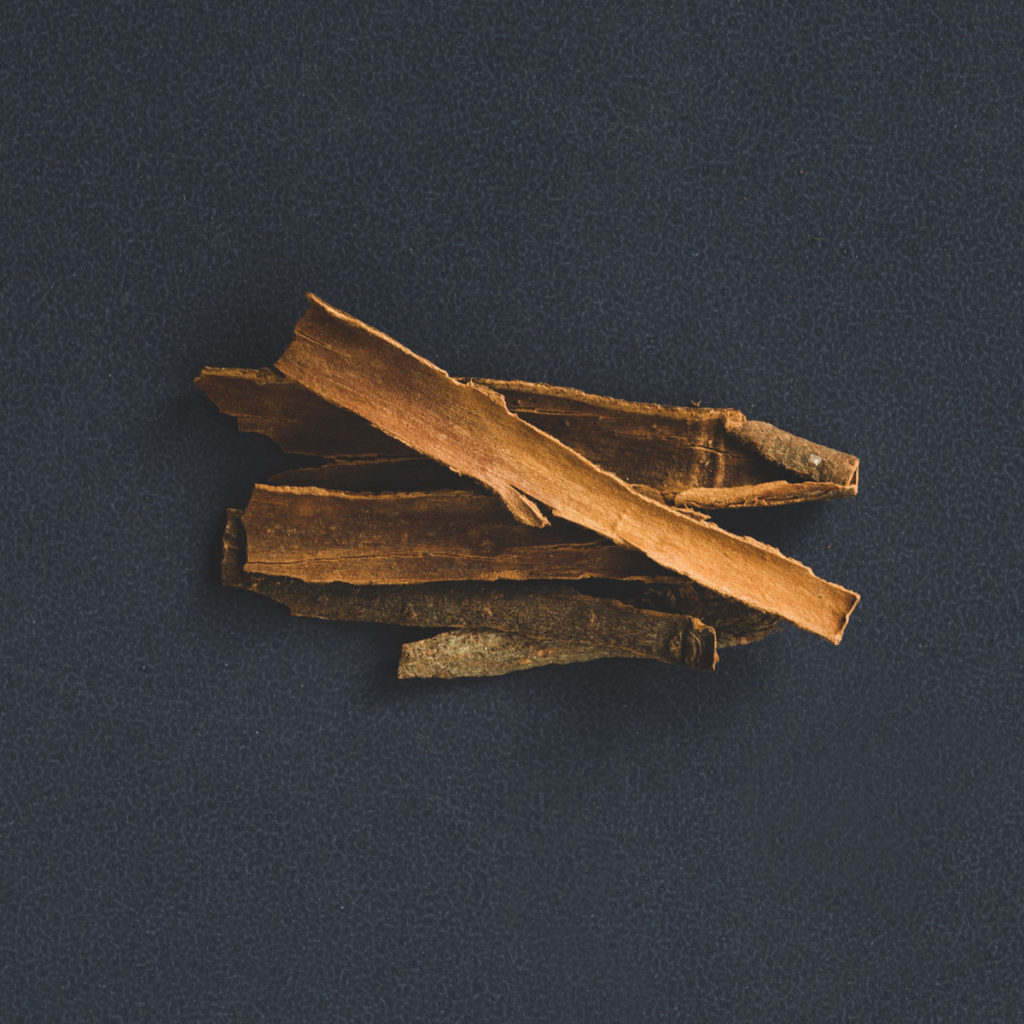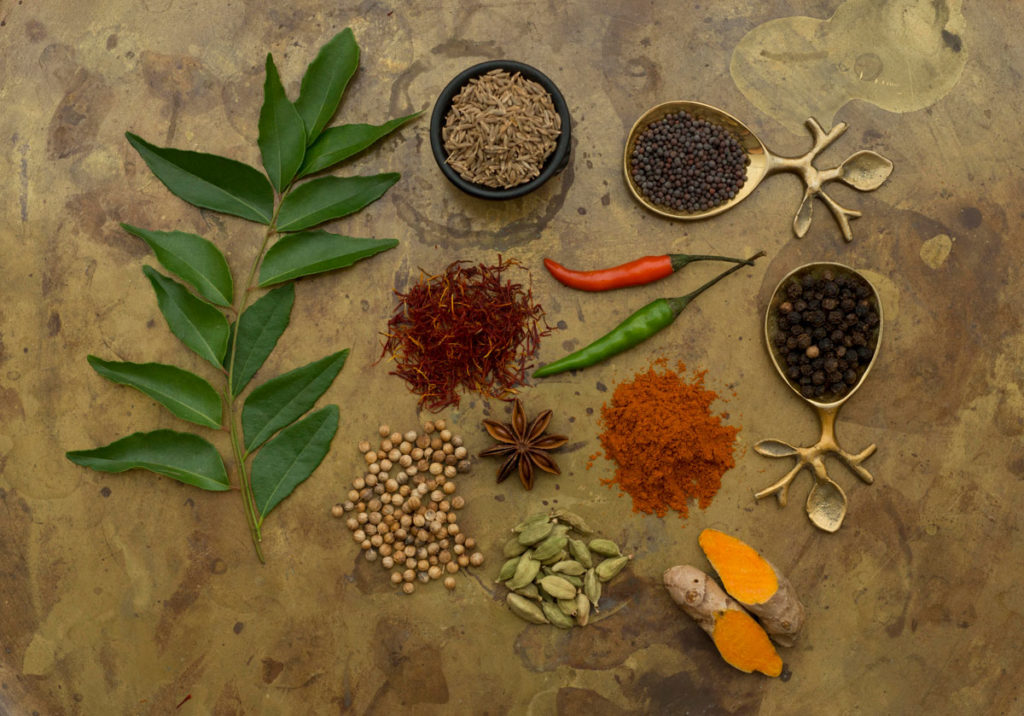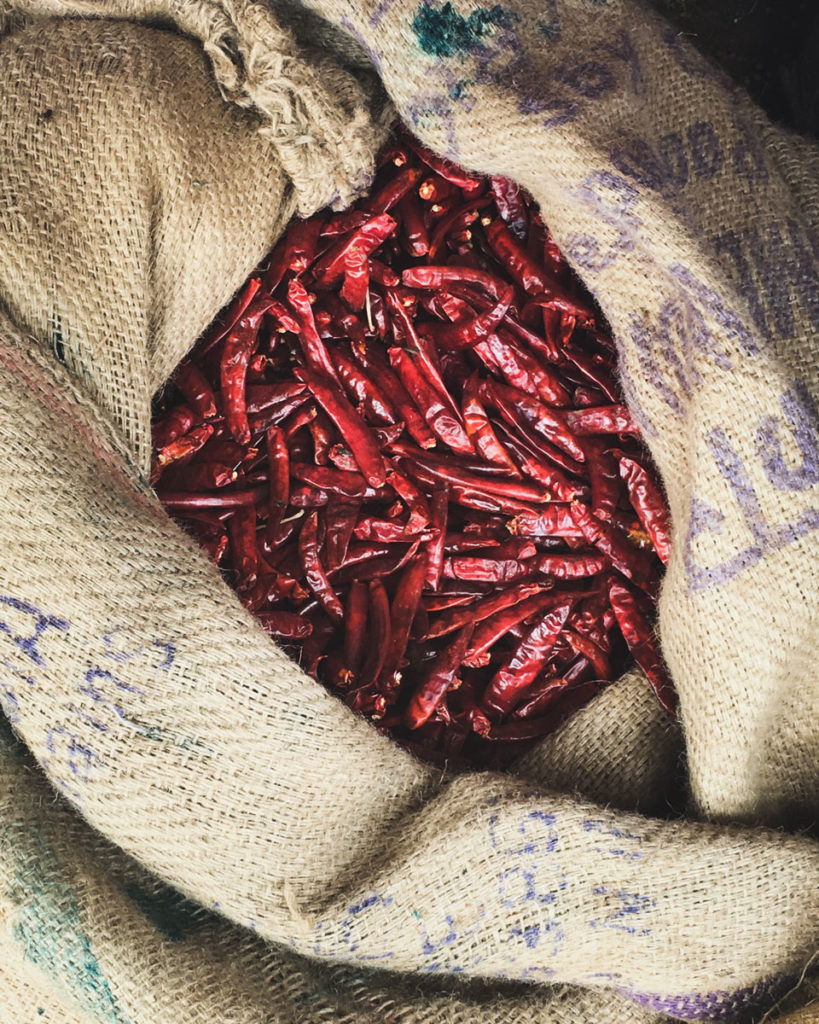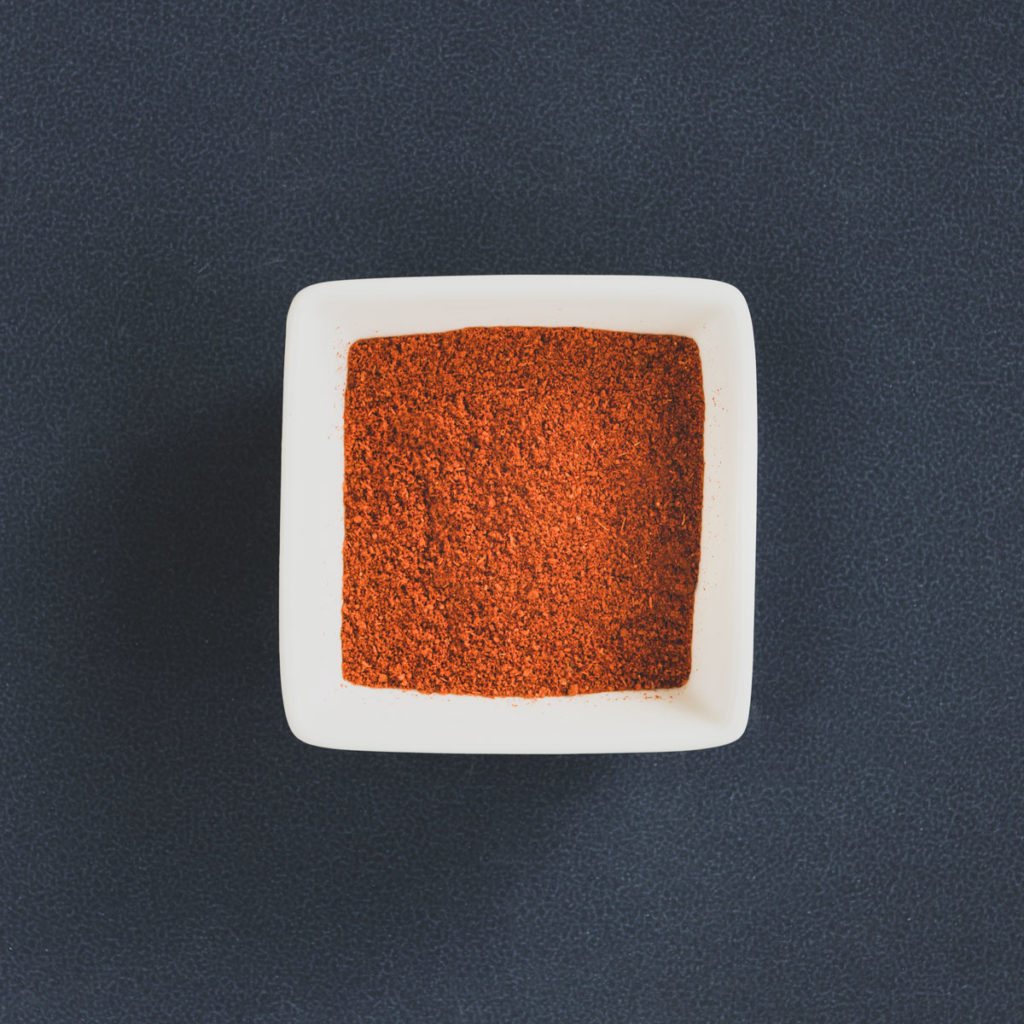Our friend Mr. Abraham has a two acre spice garden surrounding his home and two more gardens nearby. They are completely organic and open for tours. Lunch can be booked. In our previous post, we described our day in the spice garden in his backyard.
Now, with Pauli-Ann’s beautiful photos, we want to lead you through a forest of pepper, cardamom, cinnamon, turmeric, ginger, allspice, cloves and nutmeg to tell you more about the cooking applications and wonders of the spices you can find there.
We’ll also share a few more of our favourite spices from Mr. Abraham’s Organic Spice Store. Let’s begin with the world’s most consumed spice, pepper.
Pepper – the king of spices

We use black pepper daily to season our food and maybe through enjoyment of its pungency – our lives. The best pepper in the world comes from here in Kerala on what is known as the Malabar coast. It is often referred to as Tellicherry pepper.
The plant does not grow on its own. It’s a vine that lives symbiotically with the tall trees it likes to climb. It needs the rains to pollinate its flowers so they will bear their fruits. If picked while still green, they are known as green peppercorns. When they start to turn red on the vine, they are ripe and are picked and dried to become black peppercorns. If black peppercorns are soaked in water and fermented they become white (barnyard-tasting) peppercorns. Pink peppercorns, while we are on the topic, are not true peppercorns (genus Piper), but are the ripe berries of the Brazilian pepper tree.
Cardamom – the queen of spices
Mr. Abraham says cardamom it is the taste of India. It is the third most expensive spice in the world – next to saffron and vanilla. That’s because it is finicky to grow. The environmental temperature must not go too high or low or it will die. Somewhere between 18 to 35 Celsius with 75 percent humidity is ideal. It looks like a very tall potted palm with long green rhizomatous tendrils sprouting from its base. Orchid-like white flowers grow from the tendrils and yield capsular green fruits about the size of a cranberry. The fruits are dried to pods that deliver an almost antiseptic Eucalyptus or camphor-like aroma and this is most definitely linked to its taste.
The Cardamom Hills of Kerala manage to stay at the perfect temperature most of the time. When and if it gets too hot and the cardamom crop fails – the price skyrockets. Green cardamom is used in chai tea masala, rice dishes, puddings, desserts and savoury dishes and in a variety of medicines. It is clean, crisp and bright to my palate. I’m not sure if it makes me feel more alive when I taste it or if I’m just happy to be alive because I taste it.
Note: Black cardamom comes from a different plant and have a smoky tobacco flavour that will not substitute for the green pods.
Tip: Though cardamom can be purchased in the pod or ground, we always buy pods and grind the seeds, as we need them. Ground cardamom loses flavour over time so we find it is better to grind small batches, as needed. To access the seeds, place the pods in a mortar; crush them with a pestle, separate the seeds and process them in a spice grinder. Just 10 pods should yield 1 teaspoon of ground cardamom depending on the size of the pods.
Cinnamon – the true one
True cinnamon is the dried, aromatic inner bark of the evergreen tropical Asian tree, (Cinnamon verum) commonly known as Ceylon or Sri Lankan cinnamon. It is usually sold as cinnamon sticks or as a ground powder. It’s flavour is pungent and intense with fruity notes. It adds warmth to dishes and rounds out the flavour profile of Garam Masala.
Much of the cinnamon sold in North America is actually from Indonesia and Vietnam – from trees known as Cassia (C. cassia; C. aromaticum). Cassia cinnamons are stronger in flavour and aroma and while we enjoy their dominance in apple pies and cinnamon buns, the true and subtler flavour of Sri Lankan cinnamon is best for Indian (and Mexican) cuisine.
Tips: In Indian cooking, cooks use short pieces of the outer bark of true cinnamon. They use it whole or roast and grind it to use in its powdered form. You can find it at fine spice stores and Indian grocers.
Turmeric – it’s in almost everything
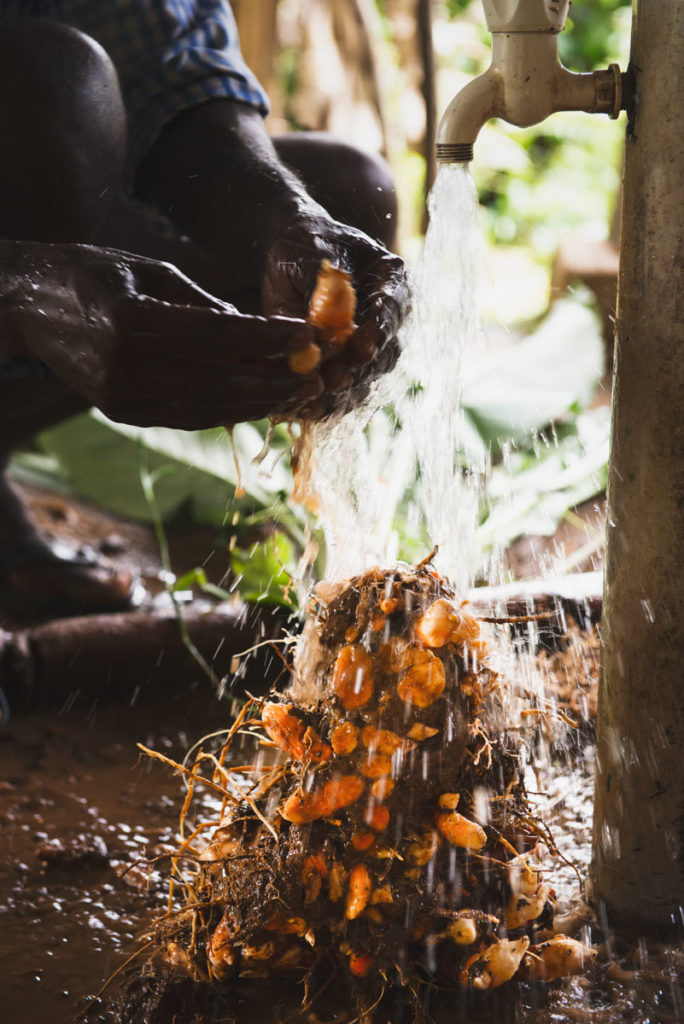
Freshly pulled turmeric. 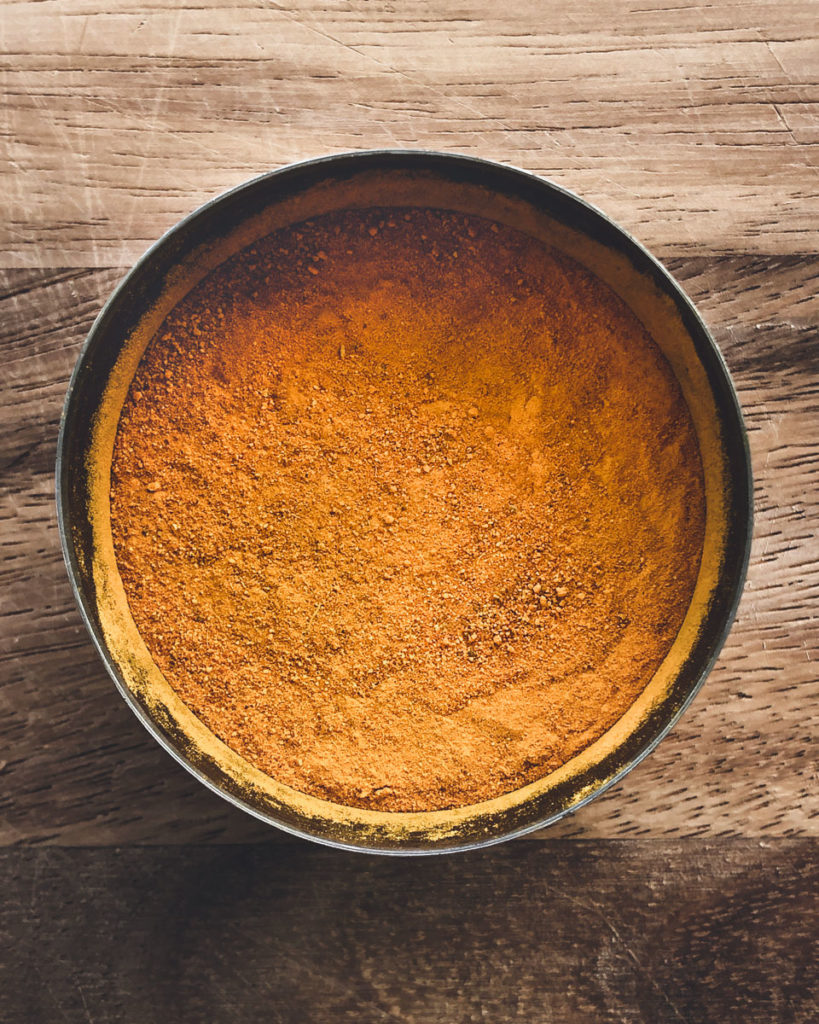
With its decidedly fragrant flavour and musky odour, this spice has a pungent, bitter, peppery biting taste reminiscent of ginger. It is used to flavour and add colour to curry dishes, powder, butter, cheese, relishes, pickles and prepared mustard. It is also occasionally used as a substitute for saffron.
Turmeric is derived from the powdered tuberous rhizome of a widely cultivated tropical, perennial plant that belongs to the ginger family.
Note: Due to its antioxidant, anti-inflammatory properties and its ability to stimulate and increase the immune system response, turmeric’s active compound polyphenol curcumin is currently being investigated for its potential role in the treatment of a wide range of medical conditions.
Ginger – from a great family

Ginger is used in both savoury and sweet dishes in South India and globally. Frequently paired with garlic, it’s got a spicy, warm flavour that is essential to Asian cooking, both fresh and ground in spice mixtures. Ginger is in the family Zingiberacea along with turmeric, cardamom and galangal.
Allspice – is only one spice
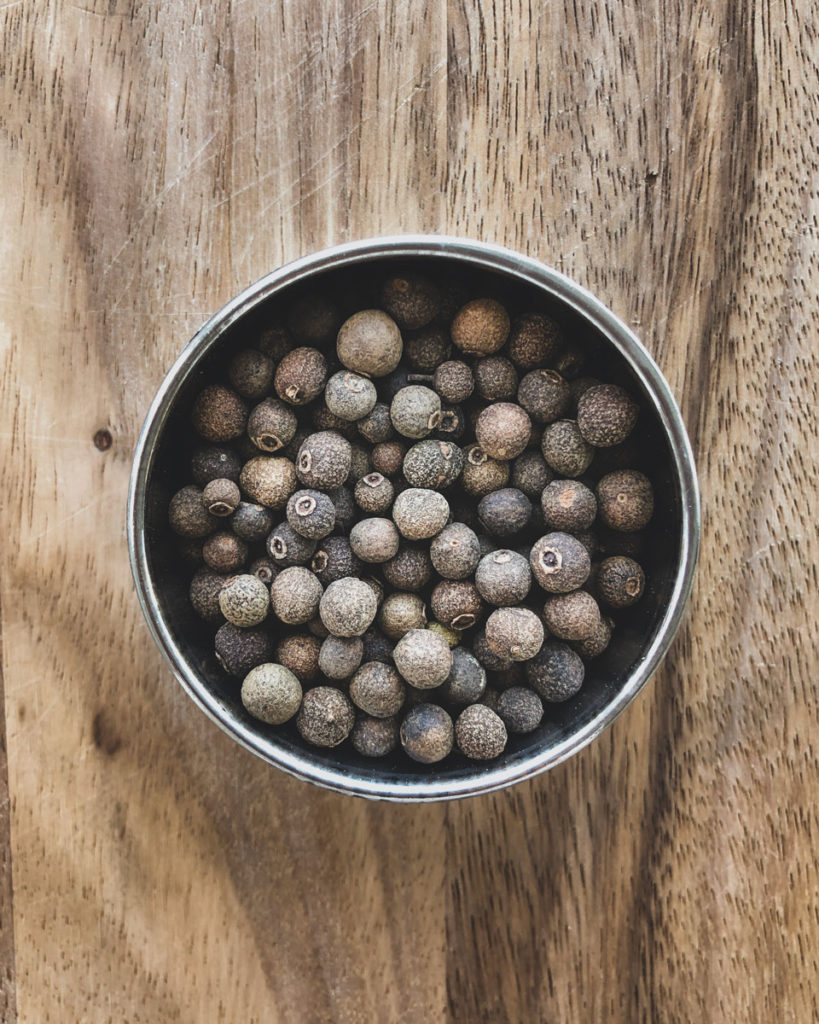
Originally from South and Central America, allspice is the berry of a pimento bush that now grows in many warm parts of the world. The name “allspice” was coined as early as 1621 by the English, who thought it combined the flavour of cinnamon, nutmeg and cloves. It’s mainly used in desserts.
Cloves – budding with flavour
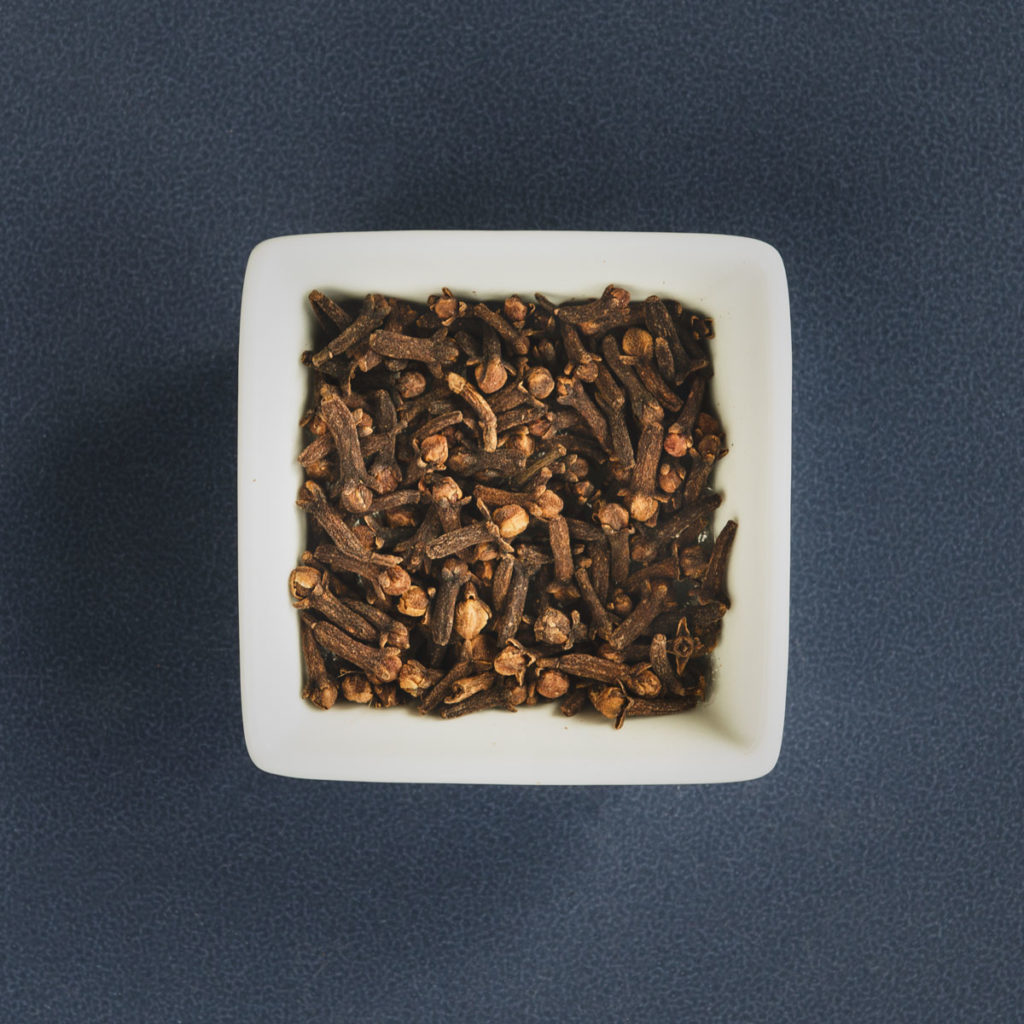
Cloves have an antiseptic, warm and pungent flavour. They are used in sauces and side dishes, mostly ground up along with other spices, but also used in Biryani where it is normally added whole to enhance presentation and flavour. They are the dried, unopened flower bud of an evergreen tree native to the Moluccas (also known as The Spice Islands of Indonesia) but grow well in South India.
Nutmeg – two spices in one
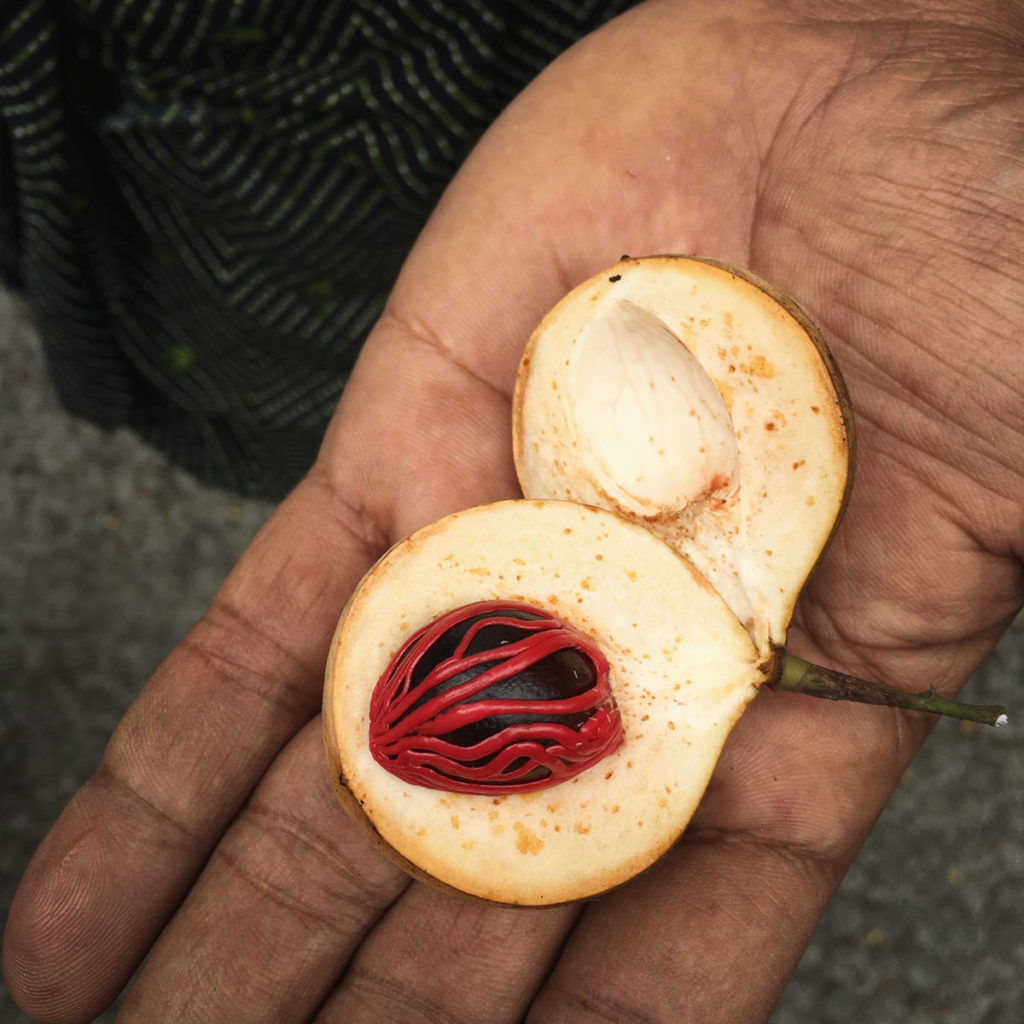
Mace and nutmeg. 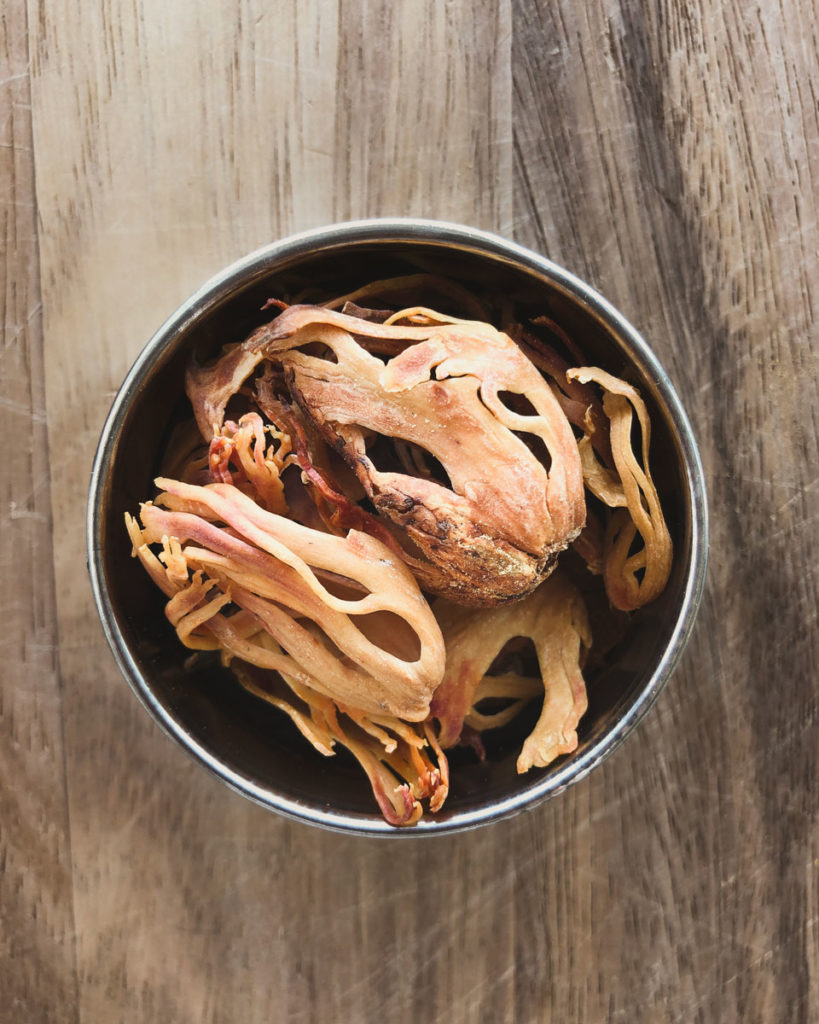
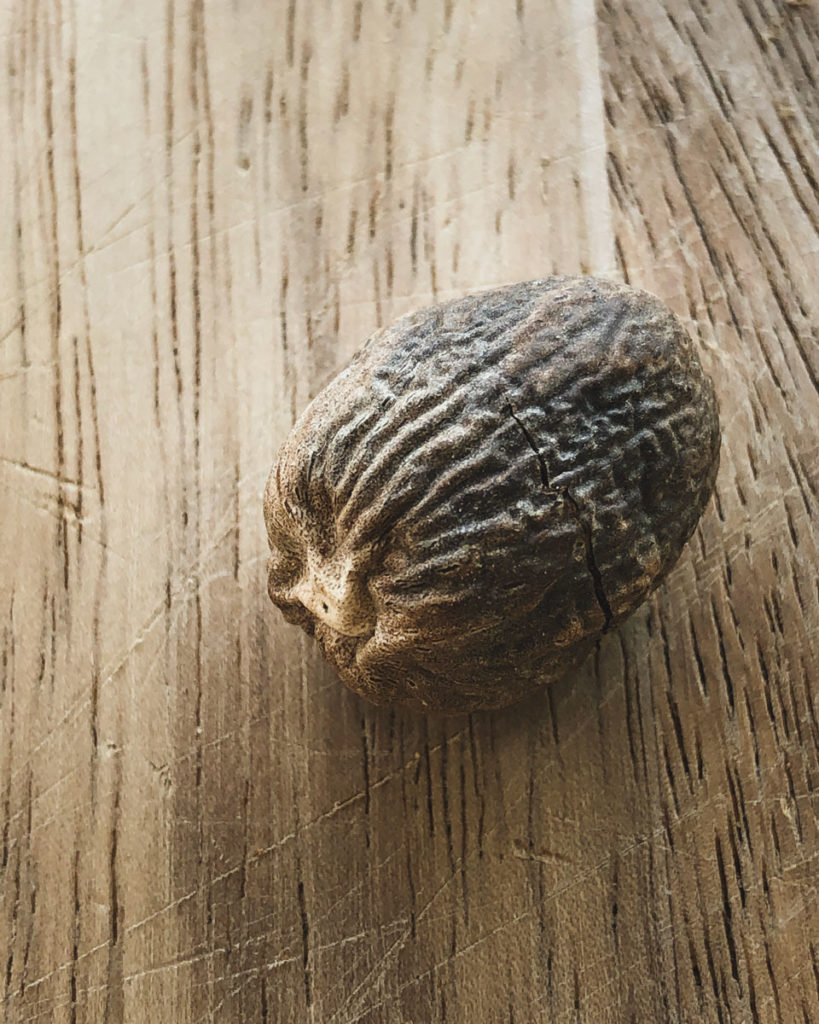
The nutmeg, is an evergreen tree native to the East Indies with golden-yellow fruits resembling apricots. As the fruits of the tree mature and lose moisture, the husk of the fruit splits exposing the shiny brown seed which is commercial nutmeg. This seed is surrounded by a fibrous, lacy aril that separates the seed from the outer husk. When dried and ground, the aril becomes the spice we know as Mace.
The flavour of nutmeg is sharp but sweet. It is almost exclusively added to sweets but is also found in small quantities in some masalas – particularly in Tamilnadu in the south of India.
Curry Leaves – where would we be without them?
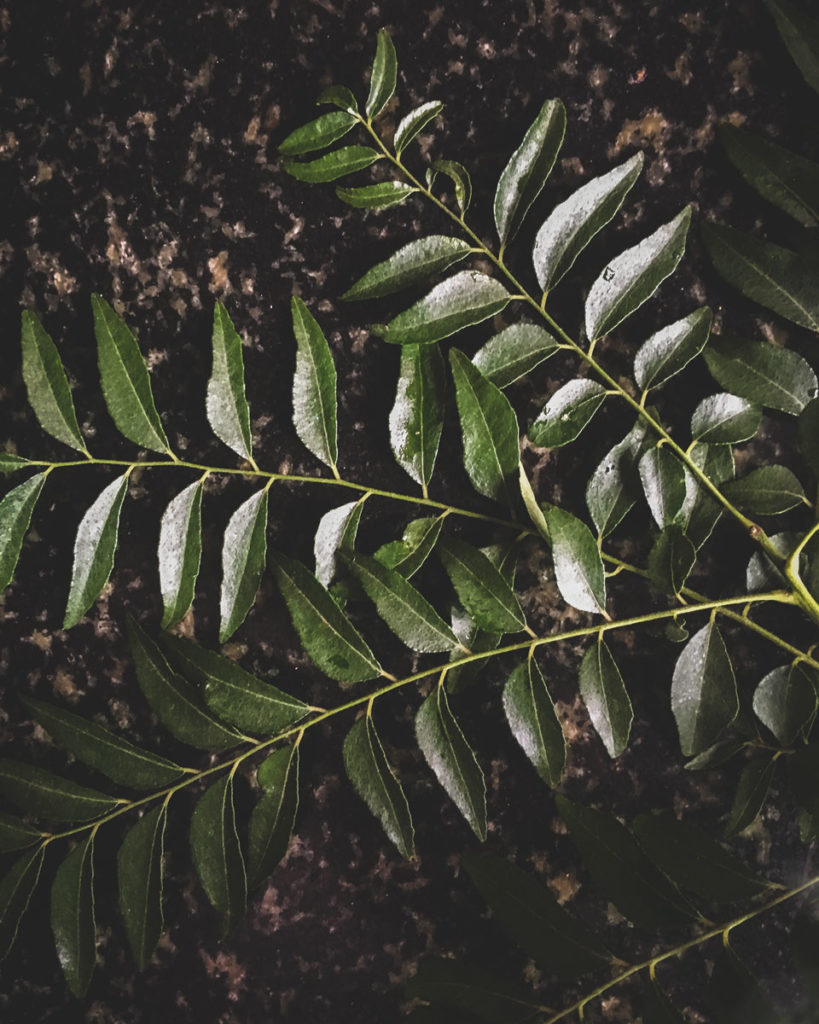
These leaves come from subtropical curry trees that are indigenous to South India. They are not where the term or flavour known as “curry” comes from. Curry—as the now generic term for a spicy gravy—evolved from the British misspelling of the Dutch word karee meaning sauce or gravy.
They are particularly pungent in smell, look much like the leaves of a citrus tree but yield a nutty flavour when cooked. Typically they are tempered in oil then cooked with the dish and removed like a bay leaf.
Tip: Rub the dark green, oval shaped leaves gently with a small amount of warm oil – so that the leaves are lightly coated – and store them in an airtight container in the freezer for a month or more. If they lose their fragrance, they’ve lost their flavour as well.
Other spices you can buy at Mr. Abraham’s Organic Spice Shop
Mustard Seeds – when they dance it’s time to curry
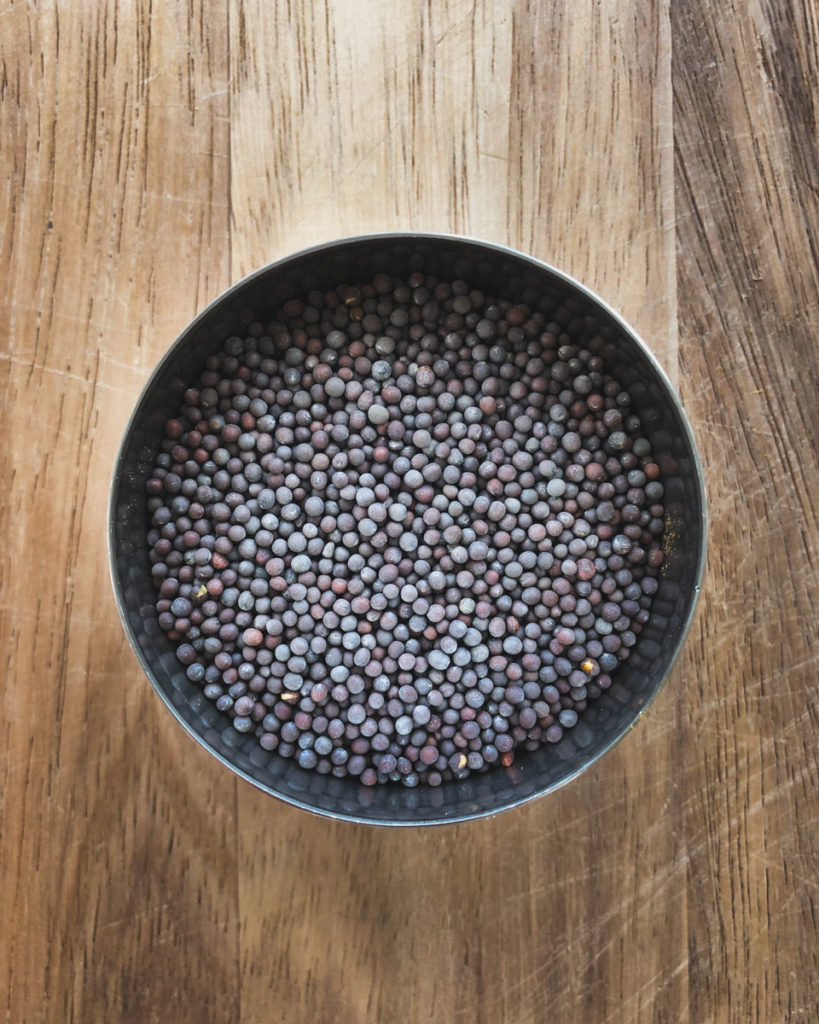
These are pungent. Most curries in South India start by tempering black mustard seeds in hot oil or ghee. When the seeds start to pop and splutter (a.k.a. dance) they are releasing their characteristic nutty flavour. When a dish has simmered for a long time, it is very common in South India to finish the dish with more mustard seeds and other spices in a spice tempering process called a tardka or vaghar.
Coriander – the world’s most consumed herb is also a spice

Also known as cilantro, the leaves and stalks of this plant, when fresh, are the world’s most consumed herb. The flowers of the plant form dried edible fruit pods as they go to seed. This dried part of the plant is then classified as a spice. Use it whole or ground to add a hint of citrus flavour to savoury dishes. Hint is the key word here as too much can be overpowering.
Tips: Coriander, the spice, is best purchased as whole seed pods and ground as needed. Dry roasting in a pan before grinding enhances flavour. Coriander leaves and seeds are not interchangeable in recipes.
Cumin – a trademark Indian flavour
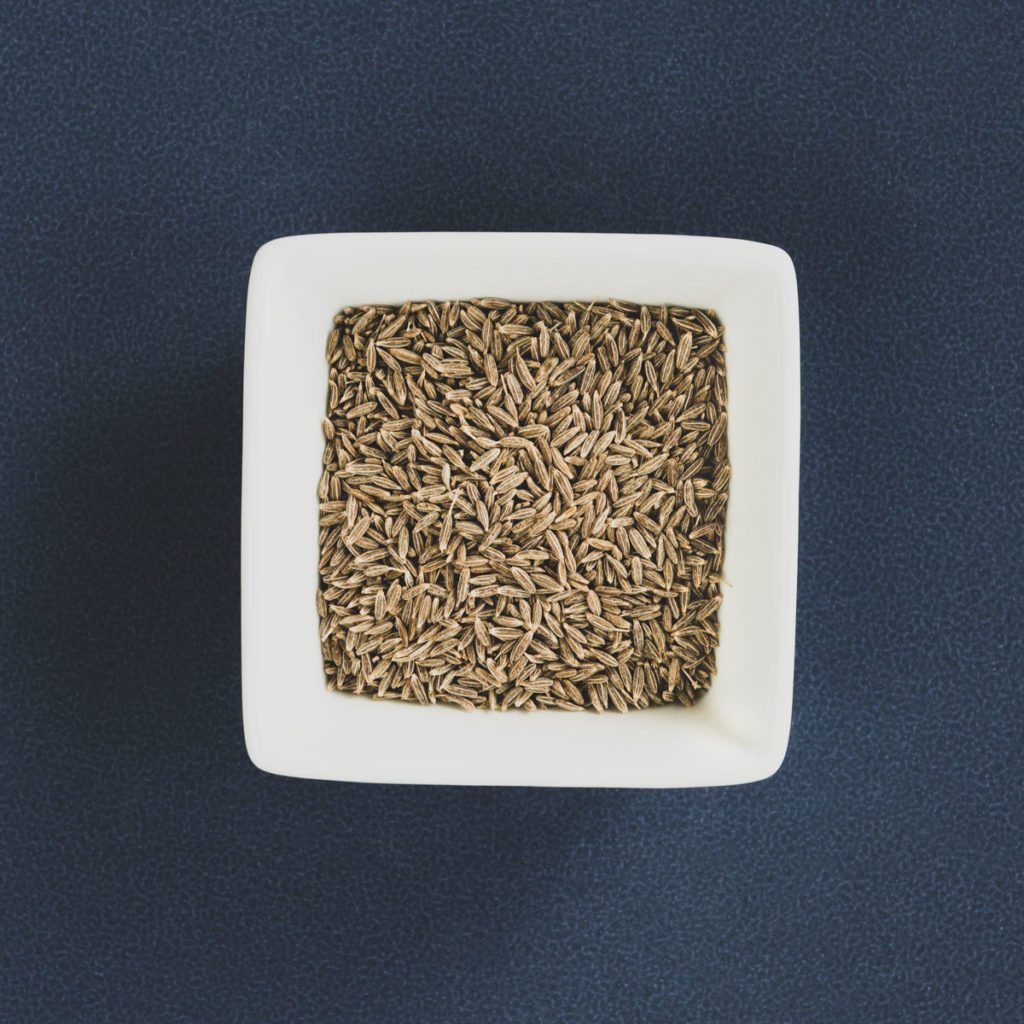
Also known as jeera in Hindi or jeerakam in Malayalam and Tamil, these seeds have anaromatic, nutty-flavour. They come in three colours – amber, white and black, with amber being the most common. Use them to season meat sauces, rice, bread, pickles and soups with this almost trademark Indian flavour.
Tip: If you dry roast the seeds in small batches in a fry pan until they are golden, just before grinding, the result will be much stronger cumin flavour.
Indian chilli powder – a little goes a long way
Both fruity and spicy, this spice adds heat when balancing the flavours of everything from appetizers to soups to savoury dishes and is especially useful in making Vindaloo.
Not your TEX MEX chilli powder
In Mexico and the American southwest, chilli powder is a spice made from dried ground Ancho chillies with small amounts of cayenne for heat. There might also be cumin, garlic and oregano for added flavour. This Tex Mex form of chilli powder is typically used tacos, fajitas and Chilli Con Carne.
Tips: Use Indian chilli powder for Indian cooking. It’s made from hotter chillies – without additional spices. If you can’t find it, substitute cayenne powder to taste. If you want to soften Indian chilli powder, use it mixed half and half with Kashmiri chilli powder.
Star Anise – for desserts and spice blends
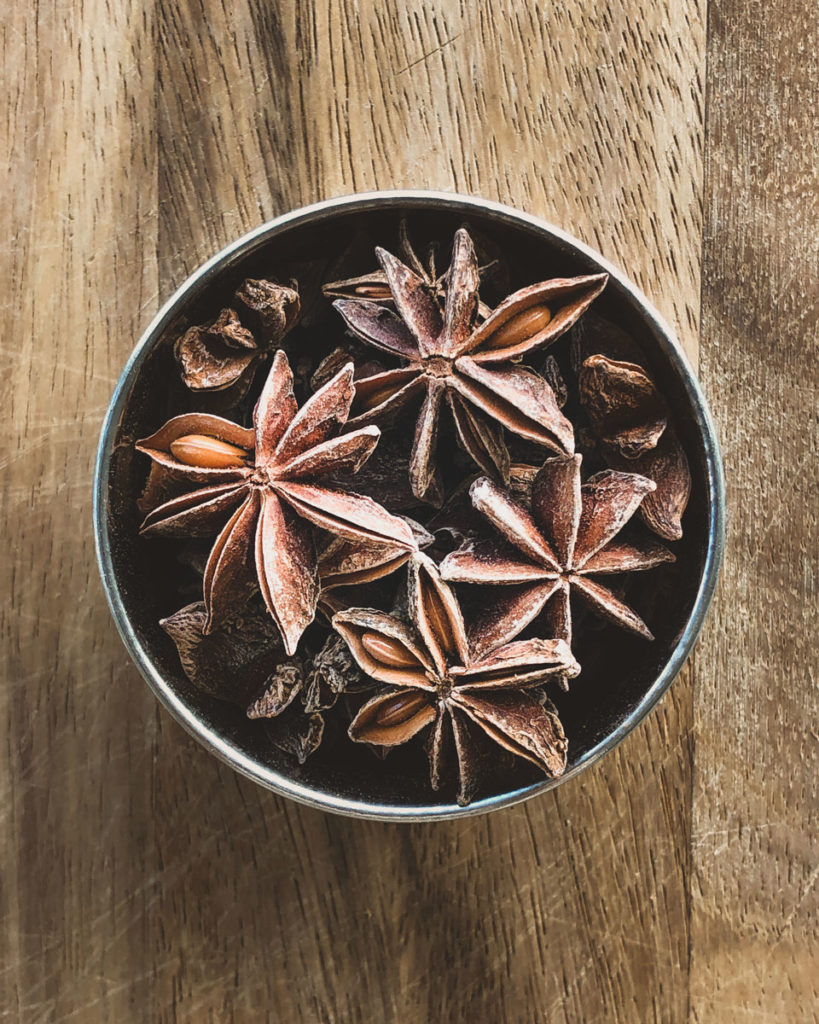
This liquorice, sweet spice adds its distinctive flavour to stewed fruit, desserts, savoury stews and in teas.
Ajwan – also known as Omum
It’s got a flavour like lovage, thyme or caraway – only stronger. Use it sparingly—dry-roasted or fried—in ghee for vegetable dishes and flatbreads.
These are small brown seeds of a perennial plant commonly known as Bishop’s Weed that are native to southern India and are also known as Ajowan, Ajowain or Indian Thyme. You can find it ground or in seed form.
Asafoetida – hing or devil’s dung
The fetid, garlicky smell of this spice is powerful. It yields an onion or garlic-like taste once cooked and small quantities act as a digestive aid in lentil and eggplant dishes and in pickles. It can be found commercially in powdered or lump form.
Also known as Devil’s Dung, this brownish, bitter, foul-smelling resin-like gum or powder comes from the dried sap extracted from the stems and roots of several species of the plant, which grows mainly in Iran, Afghanistan and Kashmir. In India, it is used especially by the Brahmin caste of the Hindus and by adherents of Jainism, as a substitute for the onions or garlic that they are not permitted to eat.
People following a pranic or Ayurvedic diet avoid asafoetida as it is considered a powerful medicine to be consumed only in certain conditions.
Fennel – a very South Indian flavour
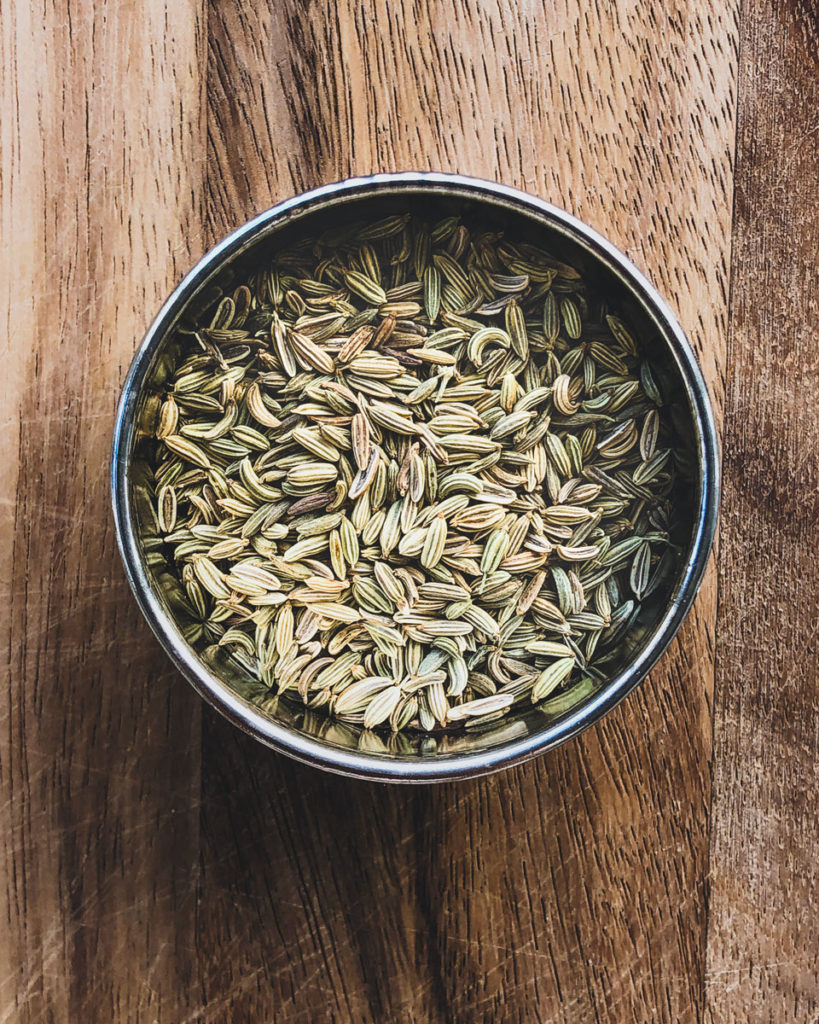
Sweet, minty and liquorice-like in flavour, these oval greenish-brown seeds are dried and used in bread, pickles, liqueurs and meat sauces. They are also used as an ingredient in Paan Masala, traditionally served after meals in India to cleanse the breath.
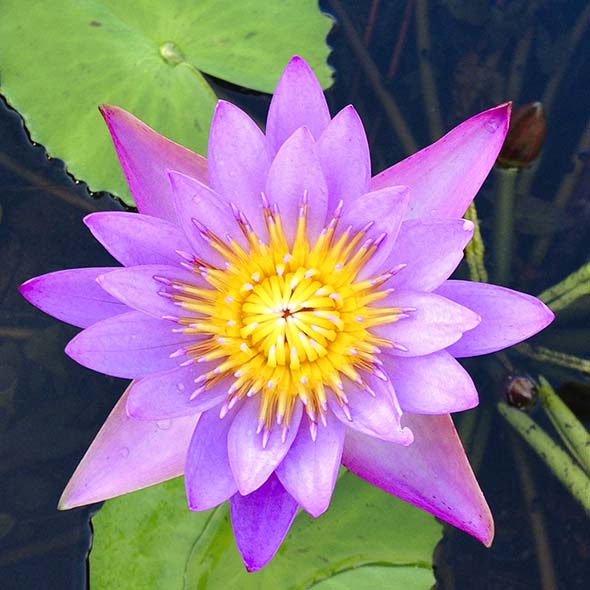
Gratitude
Thanks to Mr. Abraham and his family for hosting us during our visit to Kumily and to the KTM Society and Travel XS for sponsoring our travel throughout South India in 2016.
All words and photos are our own and were not shared with the sponsors before publication.

